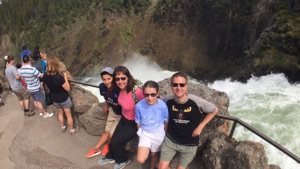Yellowstone Day 1






Summer Vacation 2017, “Out West!”


We initially planned four days and nights in Yellowstone National Park.
Then friends at Church recommended we visit Jackson, WY, so we adjusted to two days in each location.
Even thought we “only” had two days, we drove almost all the roads in Yellowstone and saw A LOT. Sure, we could stay longer, and we want to visit again, but two days helped us make more lifetime memories than we expected.
Day 5: Yellowstone National Park, sleeping in West Yellowstone, MT
(from East entrance ~ three o’clock, counterclockwise to nine o’clock)
-
1)Bison / Tatanka - family photo within the first hour entering the park (East Entrance)
-
2)Grizzly bears - two, atop the hill over that valley, far enough away
-
3)Seeing the kids’ art teacher and her husband at the one gas station - they are taking a similar trip, via Harley... proof it’s a “small world”
-
4)the Falls of the Yellowstone River
-
⁃the Lower Falls, experienced from two points further away
-
⁃the Upper Falls, seen right at the brink of the falls, looking as they fall their 308 feet into the “Grand Canyon of Yellowstone”
-
5)Mammoth Hot Springs
-
6)Elk sitting on the grass a quarter mile from the Hot Springs
-
7)Seeing the Gallatin and Madison Rivers, which join north of Yellowstone, in Montana, and along with the Jefferson, meet at Three Forks, Montana, to form the Missouri River
-
8)Sleeping in West Yellowstone, MT
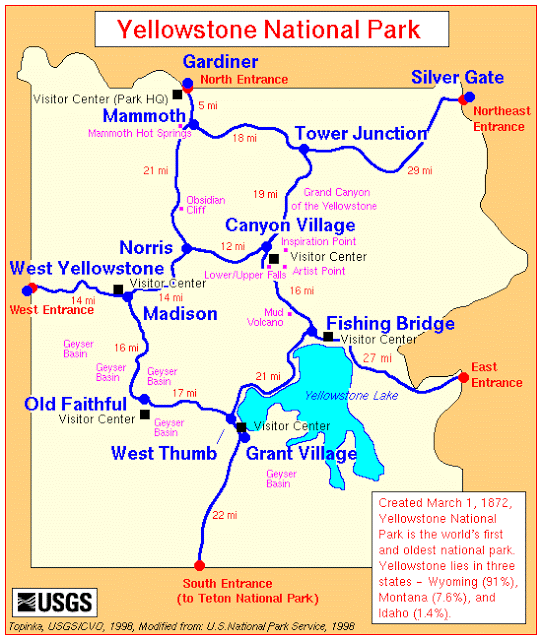

Photos:
A few from the State of Wyoming Museum, (yes, two repeats from the other page), for background on this awesome national park. What makes Yellowstone so special? It’s one of the world’s two super-volcanoes!
The drive time from Cody to the Yellowstone Park East entrance takes about an hour.
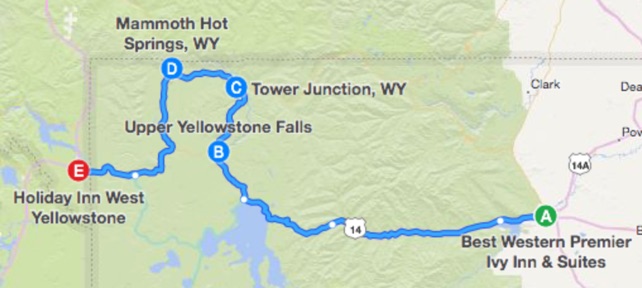
The scenery along the drive is beautiful.
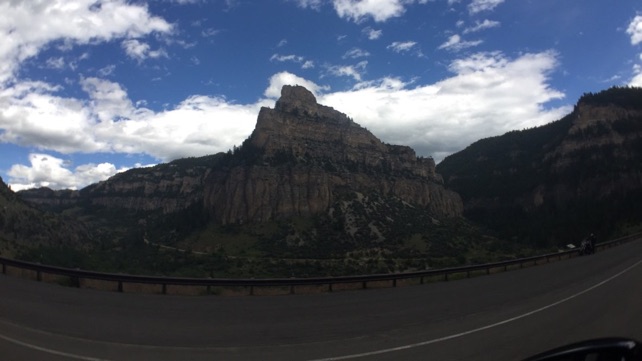
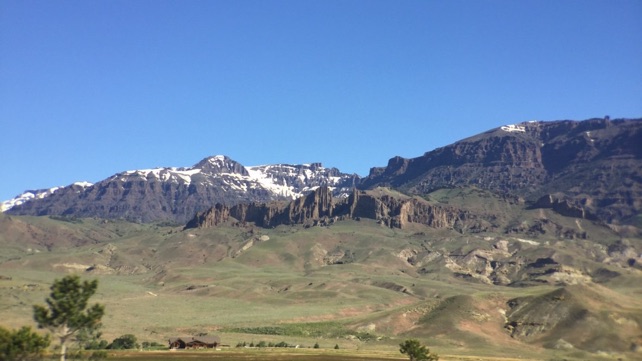
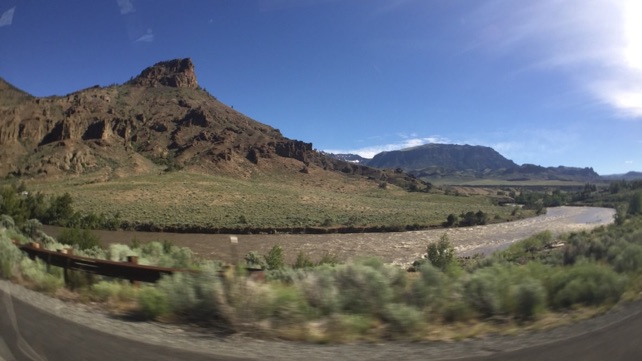
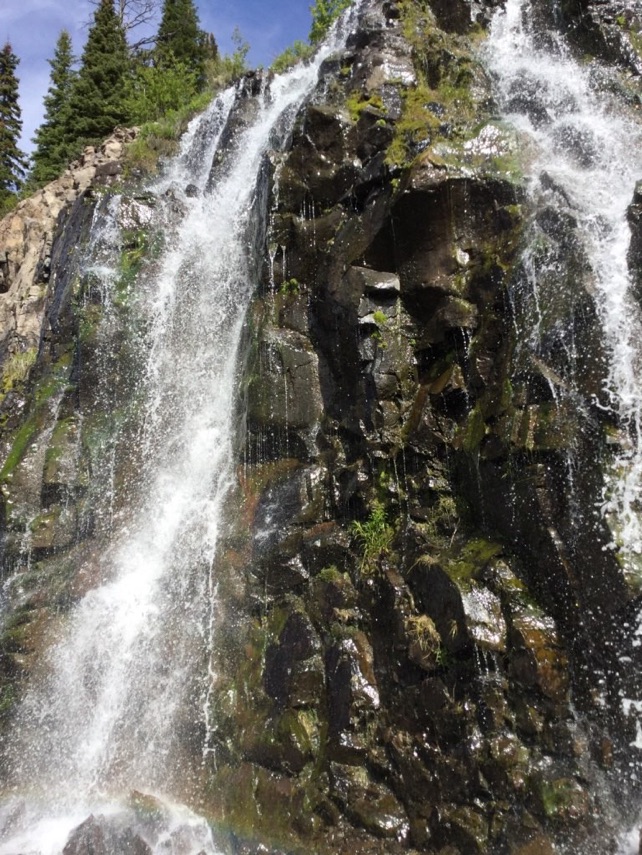
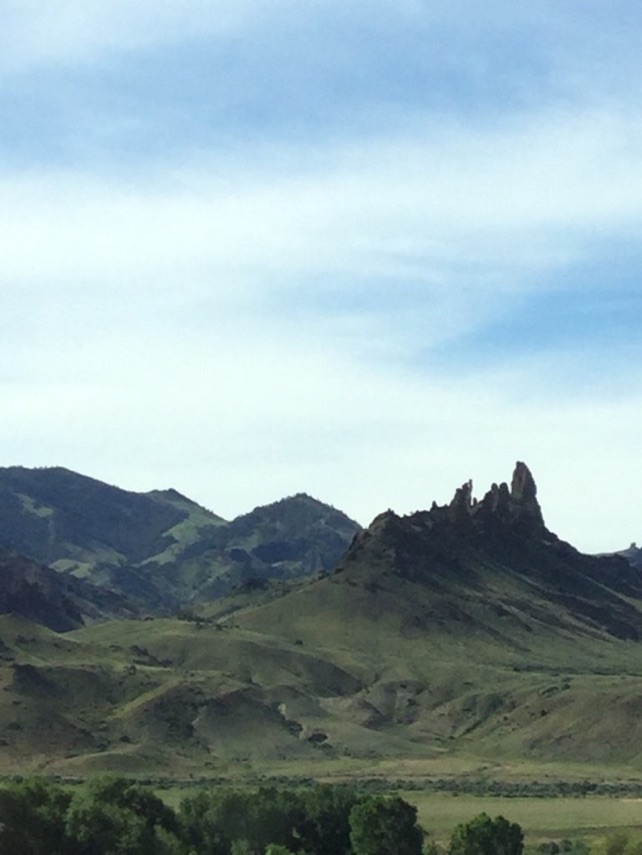
Abby edited the original, in ProCamera, and gave it more of an old time feel.
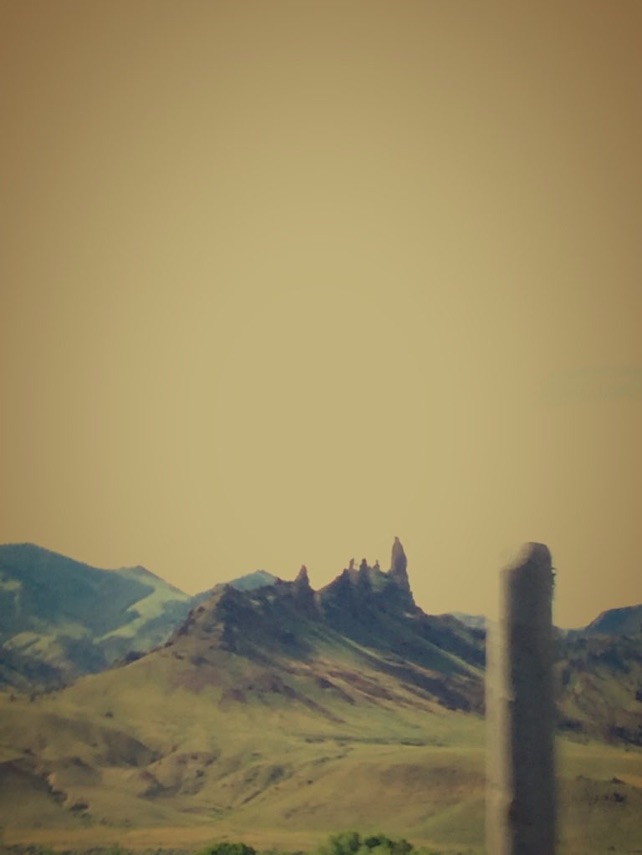
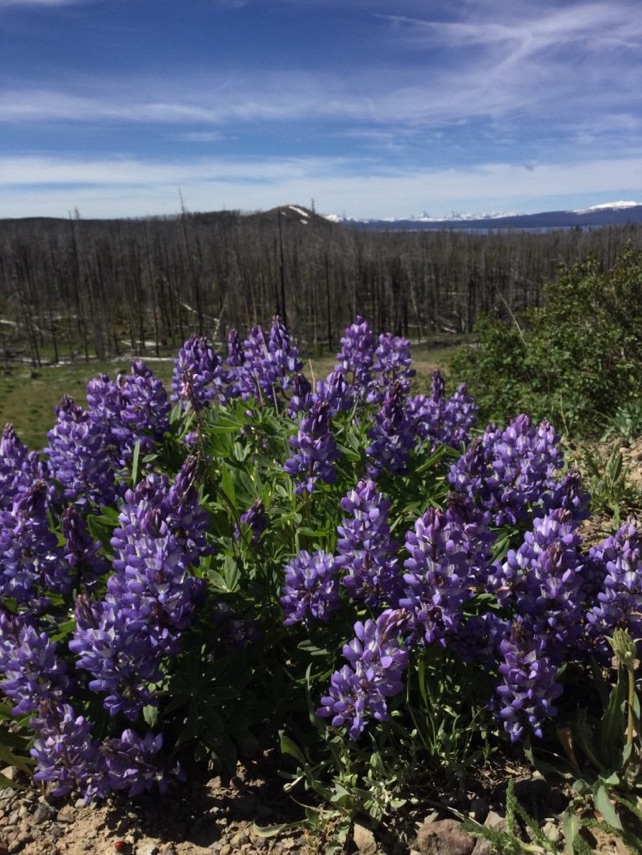
Shortly after entering the park, we turned a corner and pulled over, with all the other visitors, and saw these two grizzly bears on the hillside “over there,” across a valley that kept us all safe from one another (upper right... ~ 2 o’clock).
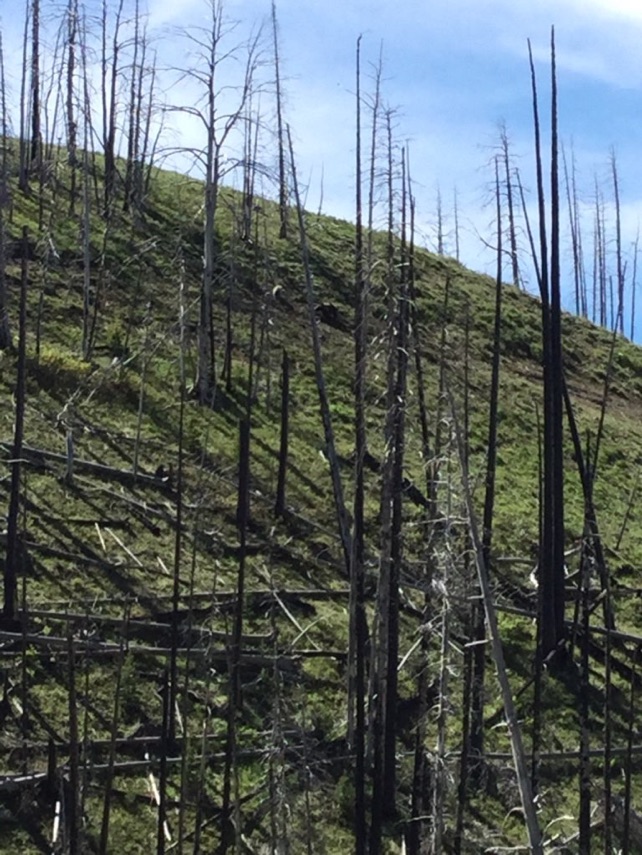
“Situated at 7,733 feet above sea level, Yellowstone Lake is the largest high elevation lake (above 7,000 feet) in North America. It is roughly 20 miles long and 14 miles wide, with 141 miles of shoreline and a surface area of 132 square miles. Yellowstone Lake freezes over completely every winter in late December or early January, with ice thicknesses varying from a few inches to more than two feet. The lake usually thaws in late May or early June. Yellowstone Lake remains cold year-round, with an average water temperature of 41°F. Because of the extremely cold water, swimming is not recommended. Survival time is estimated to be only 20 to 30 minutes in water at this temperature.
“Yellowstone Lake has the largest population of wild cutthroat trout in North America. How a Pacific Ocean fish was trapped in a lake that drains to the Atlantic puzzled experts for years.
...
“Underwater geysers, hot springs, and fumaroles were found at West Thumb and Mary and Sedge Bays. The hottest spot in the lake was found at Mary Bay where the temperature was recorded at 252° F (122° C). Hollow pipes, or chimneys of silica, several feet in height, were found rising up from the lake bottom at Mary Bay. It is thought that these are the old plumbing systems of now dormant geysers. Rock spires up to 20-feet tall were found underwater near Bridge Bay. Samples of this rock are being analyzed, though it is believed that these features are probably related to underwater thermal activity.
This group of researchers also found that the conditions in Yellowstone Lake are similar to those that occur near the famous hydrothermal vents on the Pacific Ocean's mid-ocean ridge. Nutrient- and mineral-rich submarine fountains support incredible plant and animal communities, including bacterial mats, sponges, and earthworms.”
source: https://www.nps.gov/yell/learn/nature/yellowstone-lake.htm
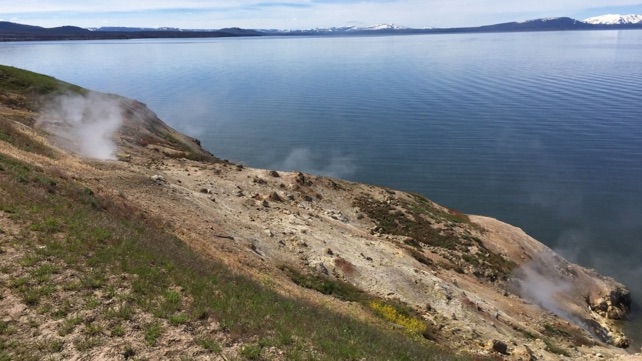

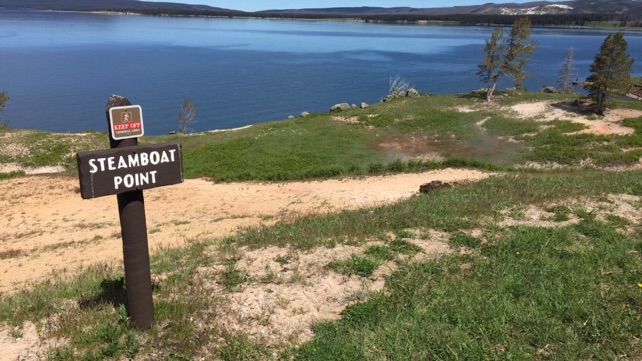

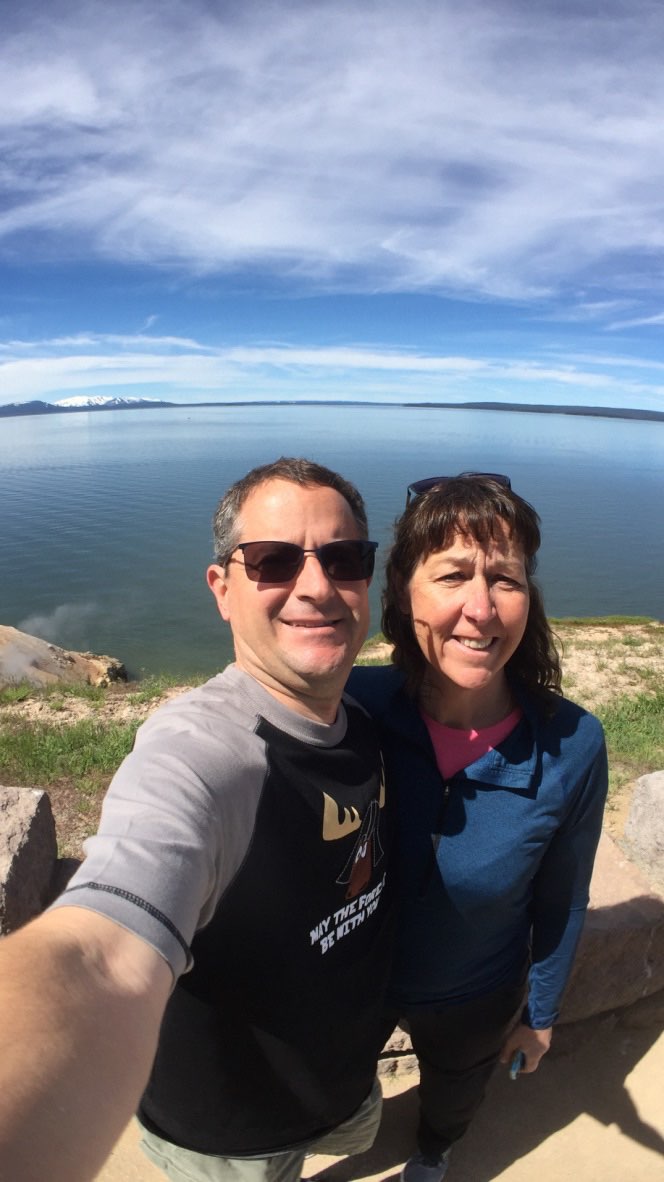
Tatanka!
Our first bison, but not the last, of the day.
See also http://vanvooren.us/OutWest/Yellowstone_Bison.html
Yellowstone Lake Just before lunch, we pulled over to another scenic stop, where we watched the Yellowstone River flow by.
We didn’t realize at the time that we were upstream of the Yellowstone Falls, which we would discover after lunch.
“The [Yellowstone] river rises on the slopes of Yount Peak in Wyoming’s Absaroka Range and soon enters the southeastern corner of Yellowstone National Park. It then flows northward into Yellowstone Lake, and, after exiting the north end of the lake, plunges 422 feet (129 metres) in two spectacular waterfalls and enters the magnificent Grand Canyon of the Yellowstone.”
source: https://www.britannica.com/place/Yellowstone-River
Another awesome “Abby Tilt” from this trip... she tilted the camera intentionally, to make for a special image!
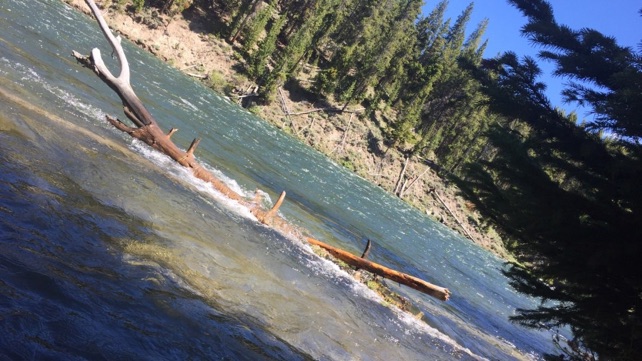

Yellowstone Falls
So awesome that they earned their own page!
This is just one photograph of the Lower Falls... other photos, and short movies are also posted to:
http://vanvooren.us/OutWest/Yellowstone_Falls.html

After Yellowstone Falls, we relaxed in the car and drove up to Mammoth Hot Springs.
Mammoth Hot Springs are limestone terraces that continue to grow... as the incredibly hot water seeps upward, out the top of the springs, and slowly leaves deposits of limestone as the water flows down the outside of the terraces.
“Travertine terraces are formed from limestone. Thermal water rises through the limestone, carrying high amounts of the dissolved limestone (calcium carbonate). At the surface, carbon dioxide is released and calcium carbonate is deposited, forming travertine, the chalky white mineral forming the rock of travertine terraces. The formations resemble a cave turned inside out. Colorful stripes are formed by thermophiles, or heat-loving organisms.
“Travertine formations grow much more rapidly than the more common sinter formations in the park because of the "soft" nature of limestone. Due to the rapid deposition, these features constantly and quickly change.”
source: https://www.nps.gov/yell/learn/nature/terraces.htm
According to our GPS, we climbed 400 feet from where we parked the van, at the base, all the way to the top.

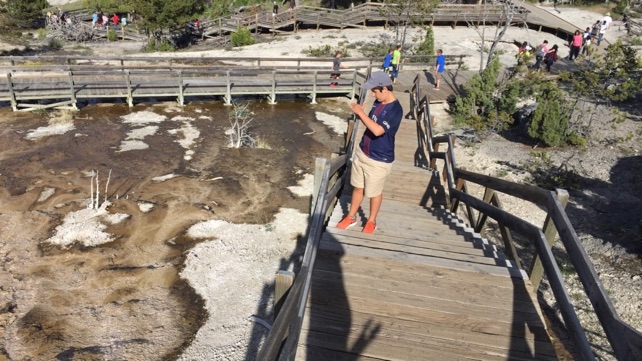
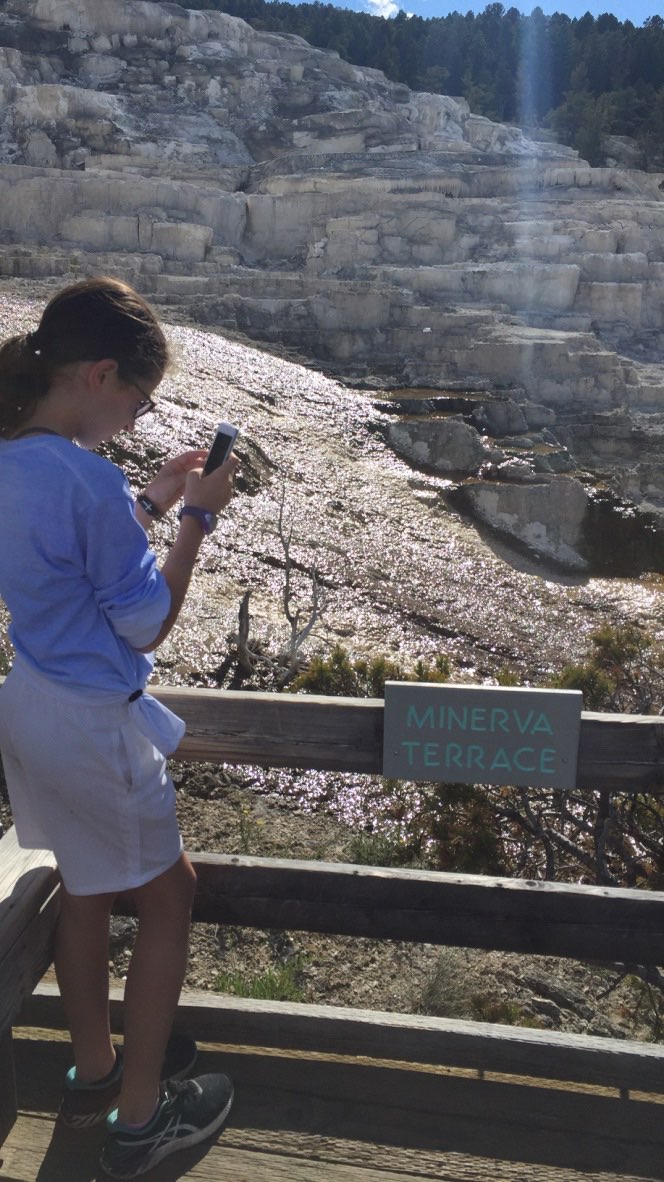
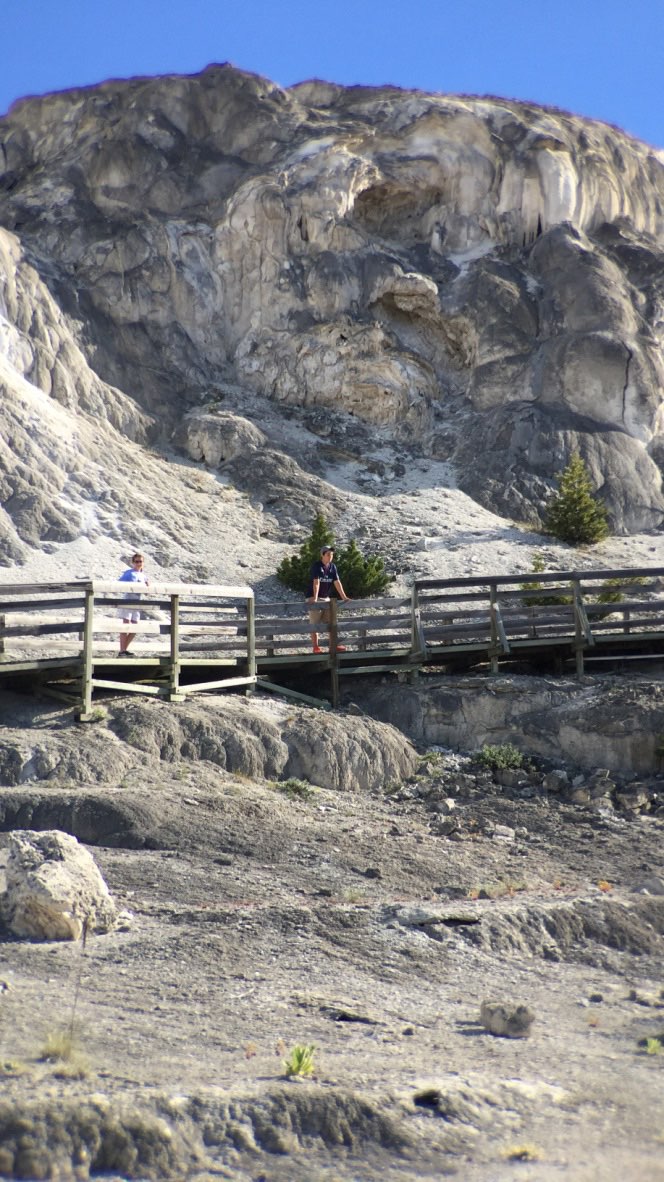

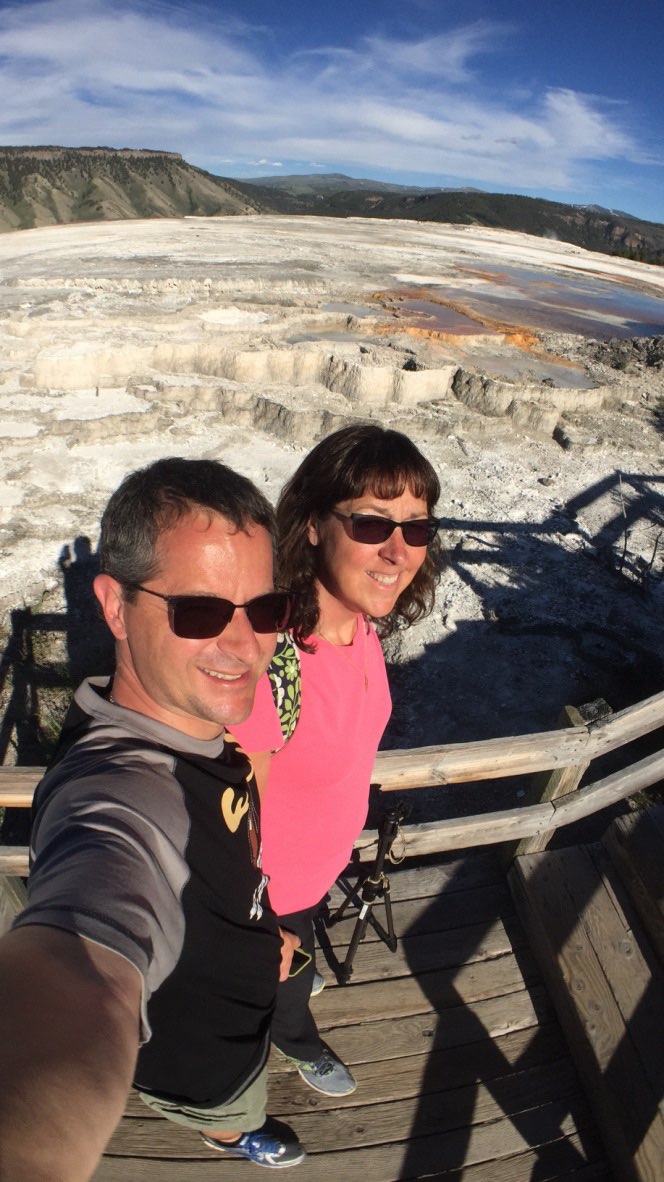
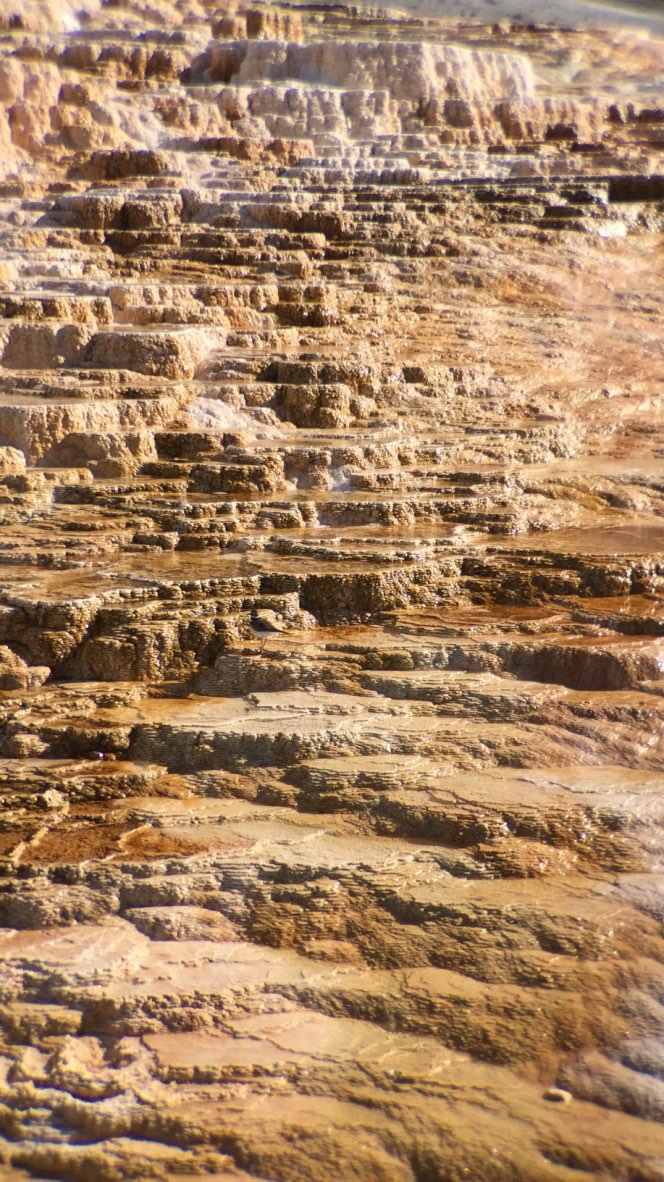


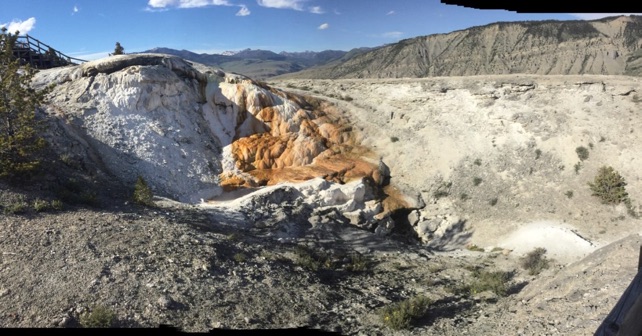

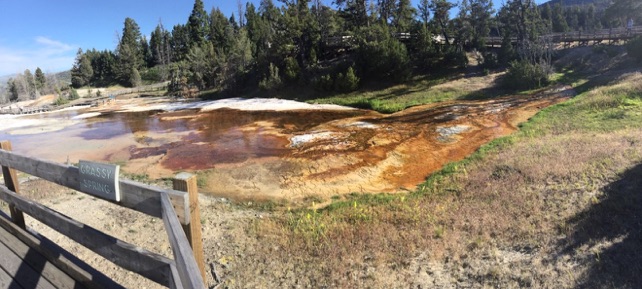

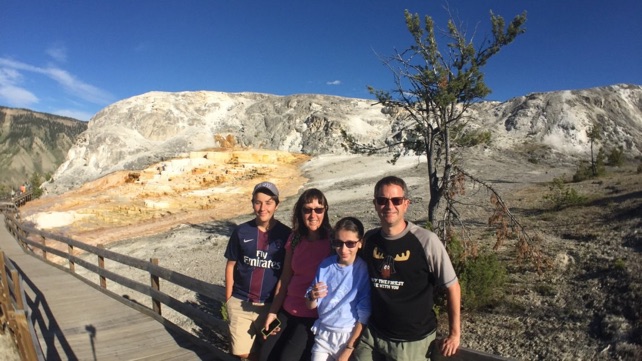

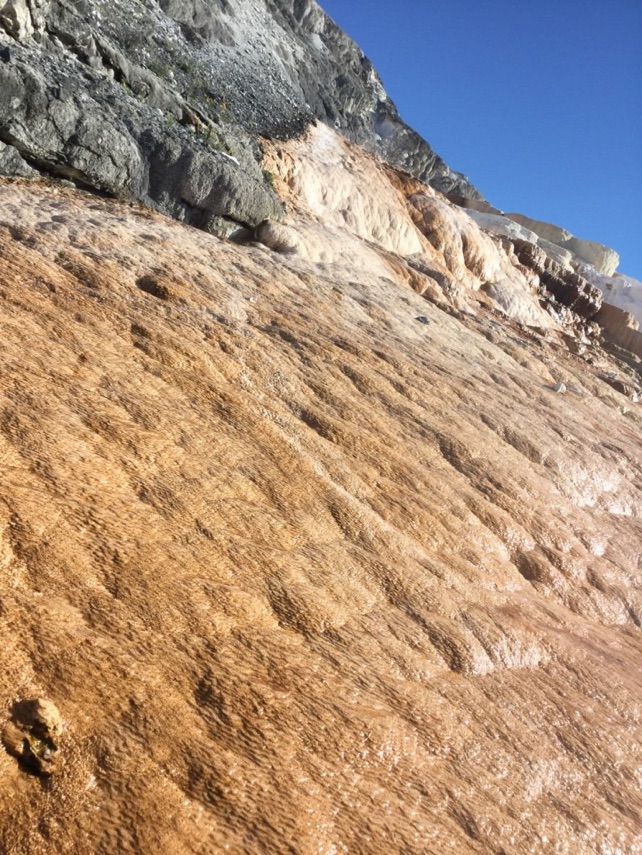
Several elk were relaxing on the grass in front of the Mammoth Hot Springs Post Office.
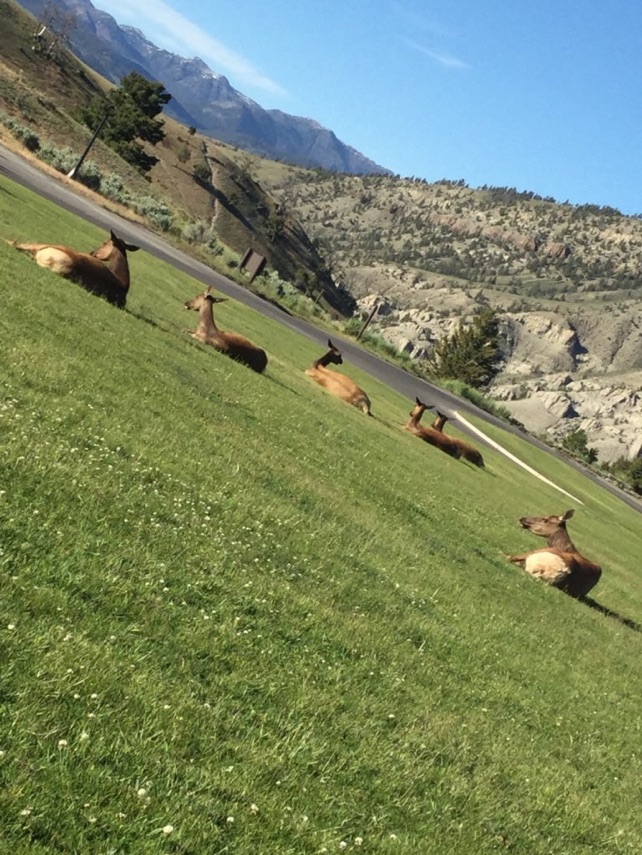
As we drove to West Yellowstone, MT, the sun set over the Madison River.
Photos by Abby.
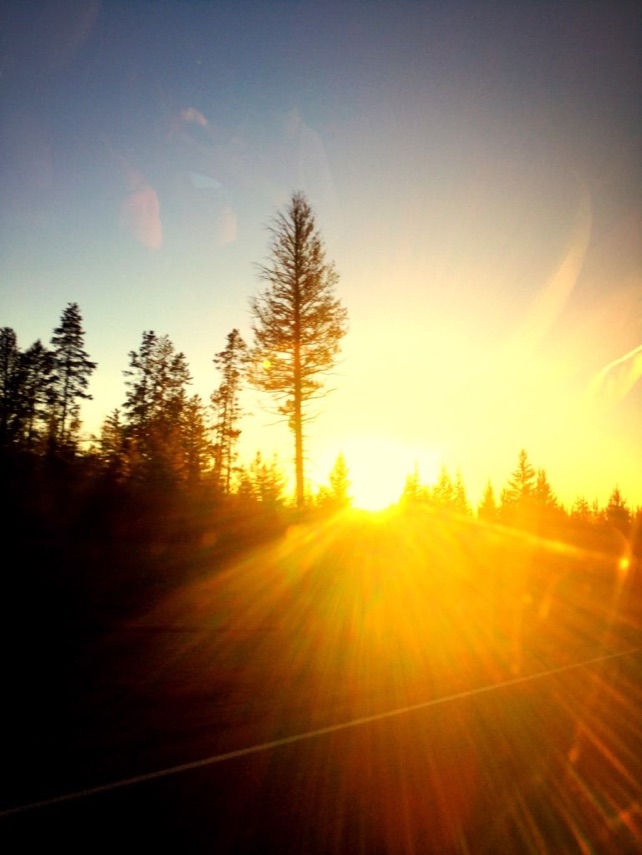
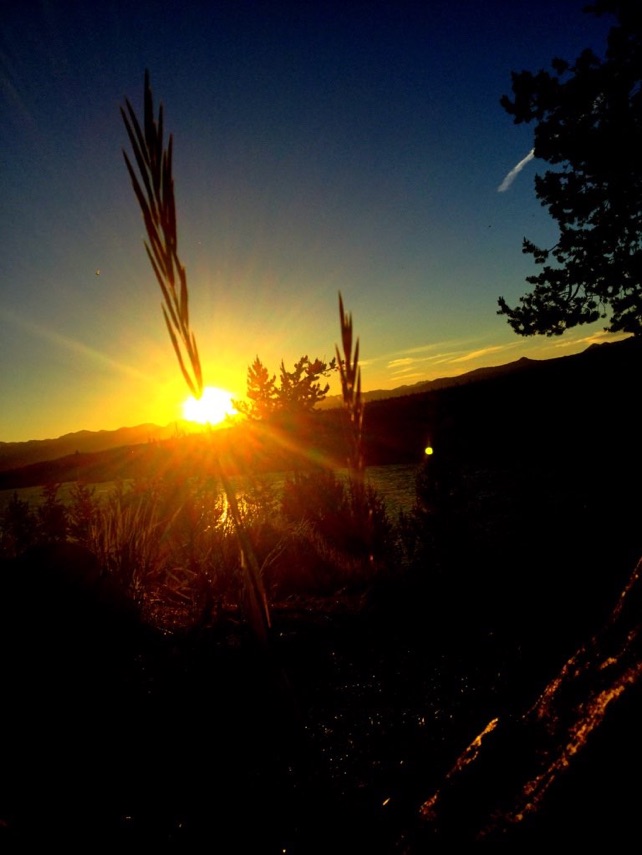
The sign says it all.
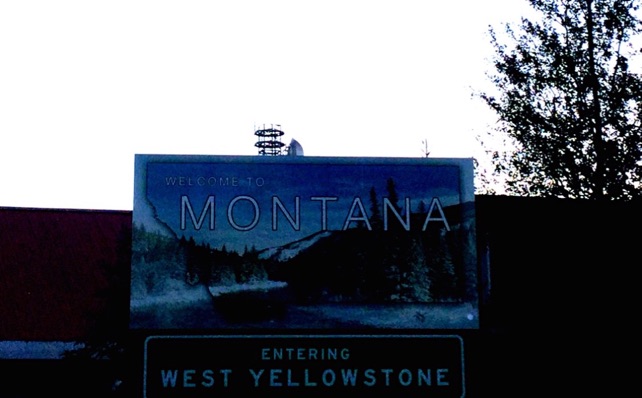



Note: we captured all other photos using ProCamera, by Cocologics.
See also http://vanvooren.us/Photography for more photography links

Links to the rest of this travel journal:


Yellowstone National Park
Day 5 - Monday, June 19, 2017

